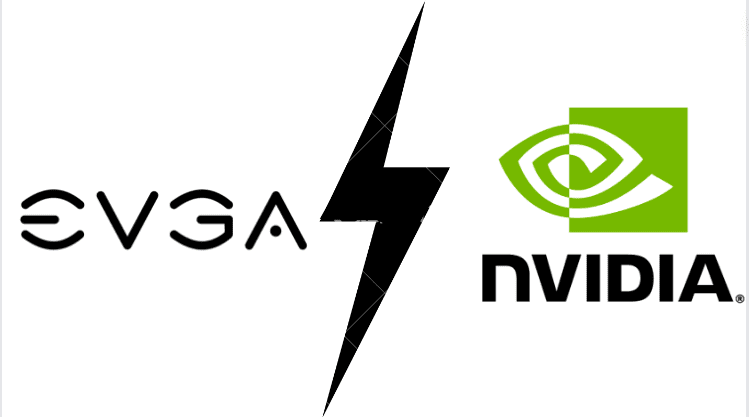Gamers and spectators around the world were shocked when computer hardware company EVGA, which has been graphic card board partners with Nvidia since 1999, suddenly announced its decision to terminate its partnership with Nvidia and leave the GPU market. The statement posted to the official EVGA forums on 16 September 2022 also revealed that the company will not carry the RTX 40-series from Nvidia. The statement further went on to clarify that they will continue to sell and support the current generation products to their existing customers until it runs out of inventory. Now the most burning question arises, what led to the end of the partnership between EVGA and Nvidia? Read on to find out.
You’ve most definitely heard of Nvidia if you’ve ever looked to buy computer parts in the past decade. They’re the leading name in the industry when it comes to designing graphics processing units, commonly referred to as GPUs for gaming and professional uses. They’ve been in the market for around 28 years and gained popularity for their technology used in the graphics for the original Xbox.
EVGA debuted as a close partner to Nvidia back in April of 1999 and they’ve grown from then to become one of the most well-known providers of Nvidia GPUs in the market. Considered one of the largest manufacturers of graphics card add-in boards (AIB), they won the market over with their excellent customer service and return policies. They’re also known among gaming enthusiasts for producing INTEL chipset motherboards. In the years since, EVGA expanded its product line to include gaming mice, power supplies, and computer cases.
The Real Why EVGA Quit Nvidia
EVGA decided to end their over 20-year-long partnership with Nvidia due to disagreement over Nvidia’s business practice. Although EVGA only made the information public on the day of the next GeForce generation, it appears that they told Nvidia of their exit strategy back in April 2022. EVGA CEO Andrew Han said Nvidia regularly mistreated the company and the decision to cut ties was the result of long-standing frustrations with how Nvidia treats their board partners. He said it was the lack of respect from Nvidia that led to their separation.
Han and chief branding officer Joe Darwin emphasized the decision wasn’t based on monetary benefits but the constant mistreatment from Nvidia was the breaking point. They claimed EVGA was kept in the dark about GPU prices until it was revealed to the public. This includes both the price paid by consumers and the finalized chip cost EVGA owes Nvidia for producing the graphic cards.
EVGA is losing money on Nvidia GPUs as they’re forced to compete with Nvidia themselves as they provide their first-party brand cards at cheap prices that partners couldn’t feasibly match. EVGA claims they’re losing hundreds of dollars on higher-end RTX 30 Series cards as they try to keep their prices remotely competitive with the Nvidia cards. Board partners are also restricted from selling flagship models like the RTX 3080 Ti above a certain price which limits the potential for expensive designs. EVGA claims being an Nvidia partner is ultimately not profitable.

Darwin claimed that despite efforts, the company was unable to reach an agreement with Nvidia on price-related issues. EVGA has also cited a lack of creative decision-making flexibility as a justification for terminating the partnership. Despite EVGA’s alleged attempts to resolve the issue with Nvidia, the result left EVGA feeling insulted and dismissed by their long-term partner, leading to their exit from the GPU market.
Nvidia’s Response
Nvidia’s statement downplays conflicts between the two companies and wishes EVGA all the very best for their future. The statement also clarified that they would support EVGA in their decision to sell the current generation of products. Nvidia CEO Jensen Huang says that the situation between the two companies wasn’t as serious as initially reported. Huang claims that Nvidia was only trying to shield AIB partners from the current market situation. This came in response to EVGA’s accusations towards Nvidia about being left out of the loop when it comes to architectural developments and pricing. The company also went on to clarify that it would continue to serve well even after EVGA’S exit.

EVGA’s Future Plans
Han clarified that the business won’t be sold and they don’t plan on partnering with Intel or AMD. They don’t plan on expanding their new product categories either. 80% of EVGA’s business comes from selling Nvidia GPUs but the firm makes 300% more of a margin selling power supplies.
Han claims that the company is financially sound and will continue to operate smoothly by refocusing its attention on EVGA’s lesser-known hardware products. Even with a far smaller share of revenue, their power supply unit (PSU) business supposedly generates significantly higher profit margins than their graphics cards. They also make motherboards, peripherals, and CPU coolers. Han plans to deploy the employees involved in the GPU manufacturing process and assure they will be taken care of.





